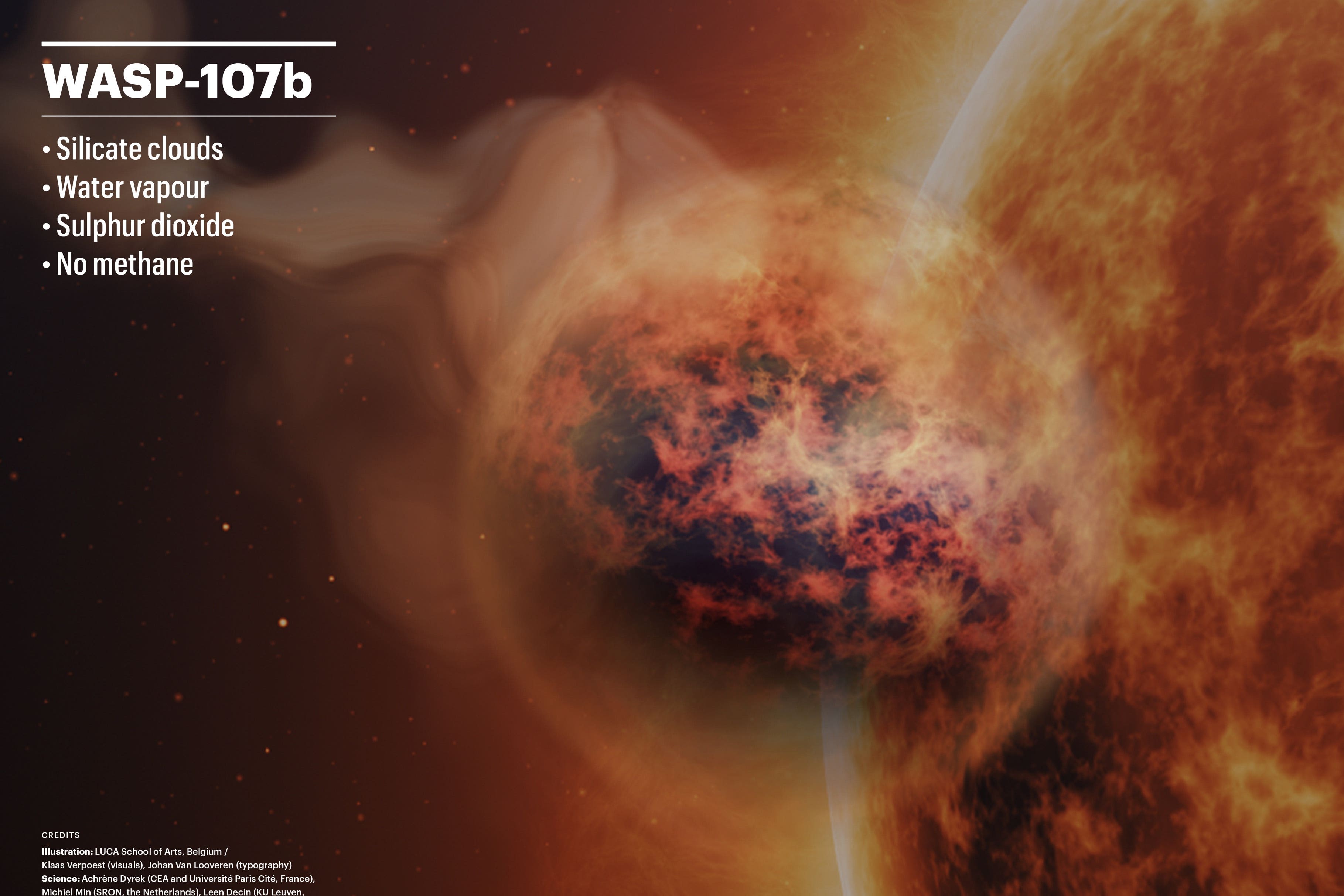Astronomers observe ‘fluffy’ planet where it rains sand droplets
Scientists say the exoplanet WASP-107b has a cloud cycle similar to Earth.

Your support helps us to tell the story
From reproductive rights to climate change to Big Tech, The Independent is on the ground when the story is developing. Whether it's investigating the financials of Elon Musk's pro-Trump PAC or producing our latest documentary, 'The A Word', which shines a light on the American women fighting for reproductive rights, we know how important it is to parse out the facts from the messaging.
At such a critical moment in US history, we need reporters on the ground. Your donation allows us to keep sending journalists to speak to both sides of the story.
The Independent is trusted by Americans across the entire political spectrum. And unlike many other quality news outlets, we choose not to lock Americans out of our reporting and analysis with paywalls. We believe quality journalism should be available to everyone, paid for by those who can afford it.
Your support makes all the difference.Astronomers have observed a “fluffy” planet around 200 light-years from Earth where it rains sand droplets from silicate clouds.
Data gathered using the James Webb Space Telescope (JWST) has revealed that WASP-107b – which orbits a star in the constellation of Virgo – has a dynamic atmosphere made up of water vapour, sulphur dioxide, and sand clouds.
Scientists say this exoplanet – a planet outside the Solar System – has a cloud cycle similar to Earth, except the droplets are made of sand instead of water vapour.
While clouds have been inferred on other exoplanets, the researchers said their work, published in the journal Nature, is the first instance where astronomers have been able to identify the chemical composition of clouds in a distant planet.
Study author Dr Achrene Dyrek, an astronomer at CEA – a French government-funded research organisation in Paris, said: “JWST enables a deep atmospheric characterisation of an exoplanet that does not have any counterpart in our Solar System, we are unravelling new worlds!”
European astronomers used JWST’s Mid-Infrared Instrument (MIRI) to peer deep into WASP-107b’s atmosphere.
WASP-107b is just a little smaller than Jupiter but its mass is less than 10% of the gas giant.
This makes it one of the lowest density exoplanets known, thus earning the label “fluffy” – like candyfloss.
The fluffiness of this exoplanet allowed astronomers to look much deeper into the atmosphere – roughly 50 times deeper compared to Jupiter – revealing its complex chemical composition.
While the team found the presence of water vapour, SO2, and silicate clouds, they said the greenhouse gas methane (CH4) was notably absent, hinting at “a potentially warm interior”.
Just like clouds on Earth, the sand clouds high in WASP-107b’s atmosphere undergo a continuous cycle of sublimation and condensation.
The discovery of clouds of sand, water, and sulphur dioxide on this fluffy exoplanet by JWST's MIRI instrument is a pivotal milestone
Study author Dr Michiel Min, a senior scientist at the SRON Netherlands Institute for Space Research, said: “The fact that we see these sand clouds high up in the atmosphere must mean that the sand rain droplets evaporate in deeper, very hot layers and the resulting silicate vapour is efficiently moved back up, where they recondense to form silicate clouds once more.
“This is very similar to the water vapour and cloud cycle on our own Earth but with droplets made of sand.”
The researchers said their work marks “a significant milestone” in understanding more about the climatic conditions of other exotic worlds.
Study author Professor Leen Decin, of KU Leuven in Belgium, said: “The discovery of clouds of sand, water, and sulphur dioxide on this fluffy exoplanet by JWST’s MIRI instrument is a pivotal milestone.
“It reshapes our understanding of planetary formation and evolution, shedding new light on our own Solar System.”